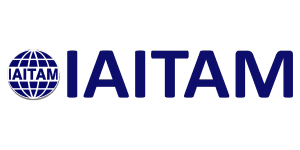Why a Strong Software Request Process Matters

In today’s business environment, having the right software tools at your fingertips is crucial for productivity and responsiveness. For IT Asset Managers, implementing a seamless software request process is essential. It’s not just about approving software and requests—it’s about empowering teams, maintaining security, and ensuring that the organization runs smoothly and efficiently. A strong software request process isn’t just to tick a box, or for fun. It is a business enabler.
Navigating the Software Landscape
Before we delve into why an efficient request process is crucial, it’s important to understand the difference between standard and non-standard software.
Standard Software encompasses the suite of applications that are pre-approved for use within the organization. These are typically vetted for security and compliance and are readily available to employees. Standard software requests should NOT require the same level of approvals, which in turn, should help keep the process faster.
Non-Standard Software includes applications outside the approved list, often required for specialized tasks or projects. These requests require additional scrutiny to ensure they align with organizational standards and policies.
It should be clear in the request system what software is standard and what is not standard to prevent confusion.
The Impact of a Robust Request Process
A well-structured software request process brings numerous benefits to the table, making it an indispensable tool for IT asset managers.
1. Empowering Productivity
Imagine a scenario where employees can access the software they need with minimal hassle. An efficient request process ensures this, allowing teams to work without unnecessary delays. We have all experienced when a request for something we need seems like it goes into a black hole. When employees have the right tools readily available, they can focus on their core tasks, driving productivity and efficiency. Our end-users’ confidence in the process is critical to them coming back in the future.
2. Ensuring Security and Compliance
In a landscape where cybersecurity threats are ever-evolving, having a centralized software request process is vital. This system enables IT teams to evaluate potential risks associated with new software, ensuring compliance with industry regulations and internal policies. By proactively managing software requests, IT asset managers can safeguard the organization against security breaches and legal challenges.
3. Controlling Costs
A structured request process helps control software spending by preventing duplicate purchases and enabling better license management. By evaluating each request, IT asset managers can ensure that software investments align with the organization’s strategic goals and budgetary constraints. Some users may not be aware that the functionality they are looking for already comes with their OS, or a cheaper or free alternative piece of software. A software request process also enables the organization to more easily put previously reharvested software to use.
4. Preventing Shadow IT
Without a formal and user-friendly process, employees might resort to using unauthorized applications—commonly referred to as shadow IT. This practice poses significant risks to data security and compliance. An easy and transparent request process mitigates these risks by providing a legitimate path for obtaining necessary tools, ensuring that employees remain within the approved ecosystem.
The Importance of Simplicity
People naturally gravitate toward the path of least resistance. If your software request process is cumbersome or time-consuming, employees are likely to seek out easier alternatives, even if they’re unofficial or risky. IT asset managers must prioritize simplicity in the request process to prevent employees from bypassing official channels. It can feel like a lot of work to have a mature request process, but is it more work than potential compliance or security issues that could arise from a poor request process?
1. Streamlined Procedures
Ensure that the process is straightforward and accessible. Use clear language and simple instructions to guide employees through each step, reducing confusion and frustration. If end-users are having errors on their submission, see it as an opportunity for improvement of the system, and NOT a reflection on the end-user’s intelligence. This sounds harsh, but far too many folks are quick to blame the end-users when, in fact, the process is mostly to blame.
2. Centralized Portals
Implement a centralized platform where employees can easily submit requests, track progress, and receive updates. This transparency not only improves user satisfaction but also enhances accountability within the IT department. Having multiple, competing systems, can become frustrating enough that users will walk away if they can.
3. Efficient Approval Workflows
Develop efficient workflows that involve key stakeholders. Automate routine approvals for standard software, while ensuring thorough evaluation for non-standard requests. Quick processing is key to maintaining employee engagement and preventing shadow IT. Even our non-standard requests MUST be addressed quickly. If it is a non-standard request, the requestor has probable already decided that their situation is important and may not have much patience for a ticket bouncing around different teams or sitting for extended periods of time.
Building a Sustainable Process
Creating a sustainable software request process involves continuous evaluation and improvement. Regularly review the list of standard software to ensure it meets the evolving needs of the organization. If standards seem outdated, they won’t be taken as seriously. Have a feedback mechanism in place for the overall experience in requesting software to make sure it is working for end-users, and to confirm there aren’t any problems that would otherwise be invisible to the IT Asset Manager.
The Role of IT Asset Managers
As IT asset managers, we have the opportunity to facilitate an environment where employees can access the tools they need without compromising the organization’s security or budget. Here are some considerations:
- Engage with Teams: Build relationships with different departments to understand their unique software needs and challenges. This insight will help you tailor the request process to better serve the organization.
- Educate Employees: Conduct training sessions to inform employees about the software request process and its importance. Emphasize the role of security and compliance, and highlight how the process benefits them and the organization. Focus on “What is in it for them!” and they will be more likely to cooperate.
- Monitor and Adapt: Continuously monitor the effectiveness of the request process and make necessary adjustments. Stay informed about new technologies and trends that could impact the organization’s software needs.
Conclusion
A great software request process is essential for both ITAM and the business. By distinguishing between standard and non-standard software, prioritizing simplicity, and ensuring quick processing, you can empower your teams, enhance security, control costs, and prevent shadow IT. Ultimately, a well-structured request process makes everyone’s life easier. Let’s take the time to make sure our request process is solid. It is less work than the alternative after all.
